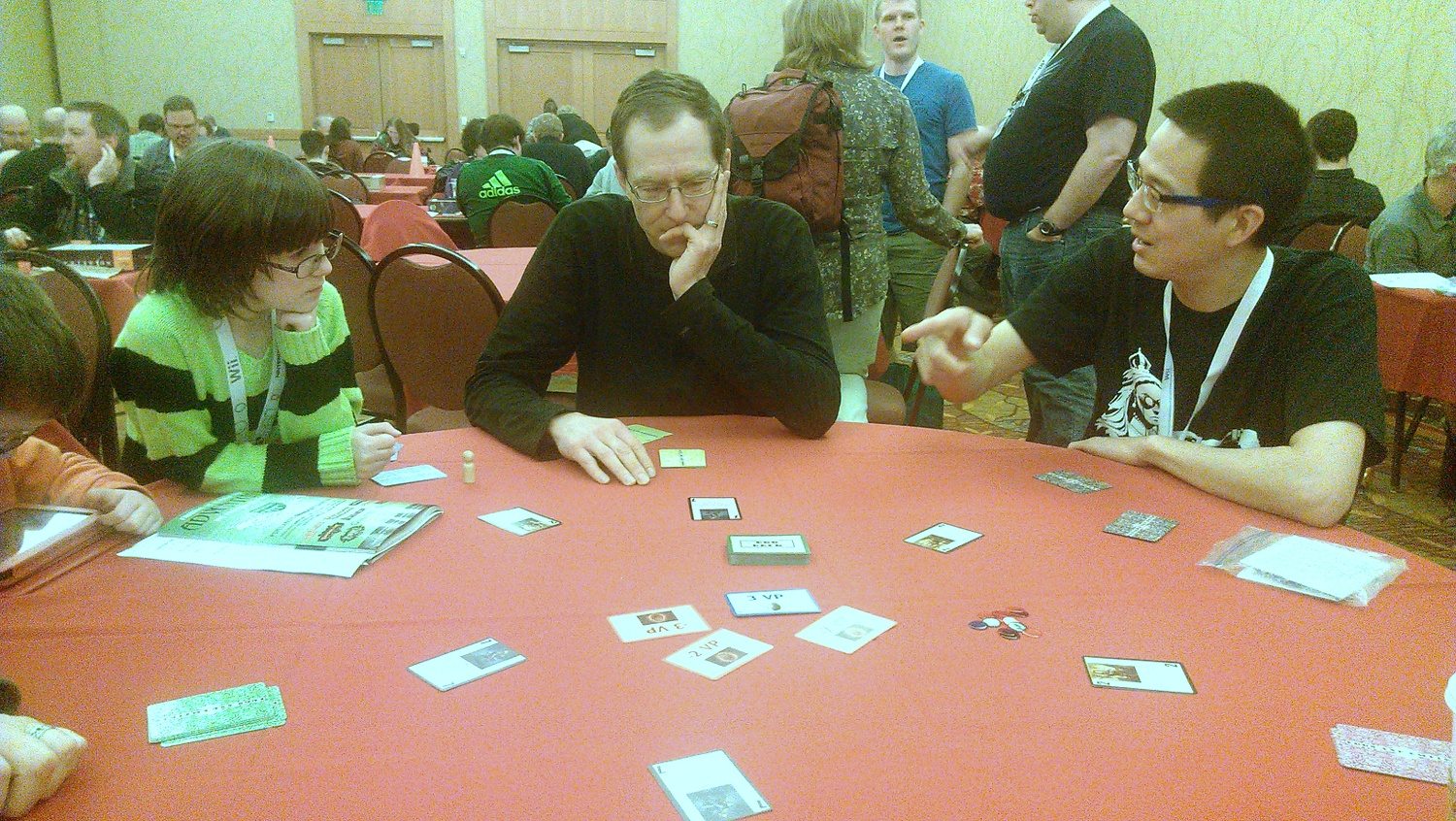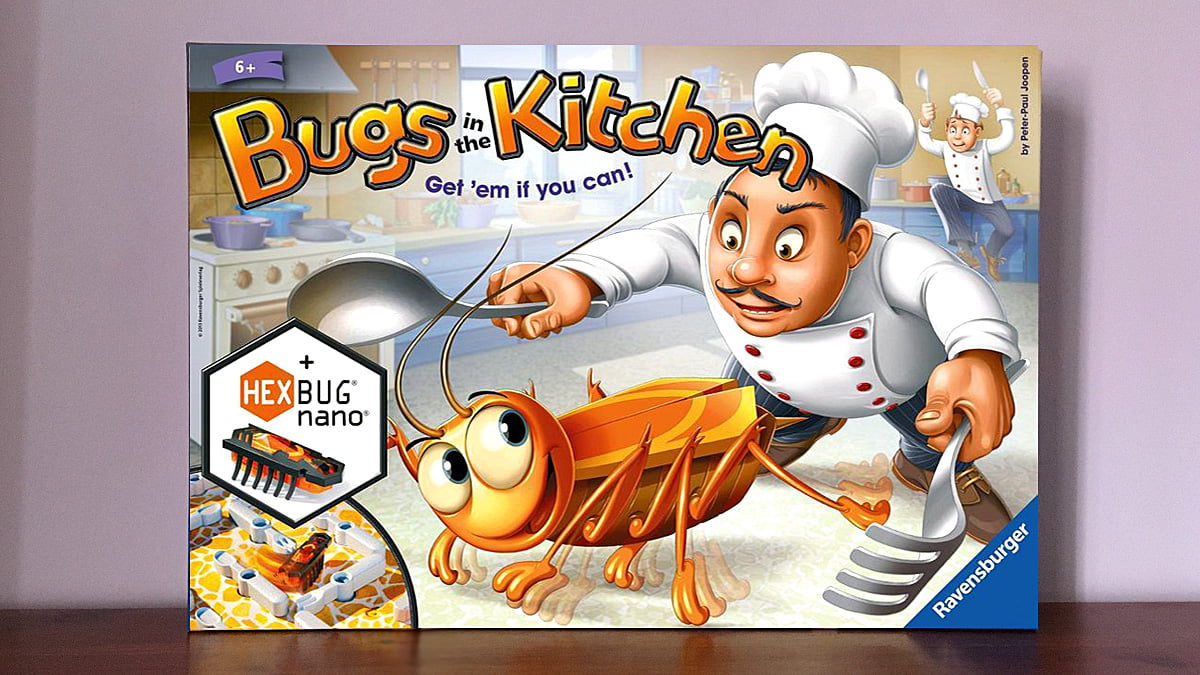
What is Bugs in the Kitchen?
Bugs in the Kitchen is a fun tabletop game for two to four players that includes a Hexbug nano miniature robot. Players must move cutlery shaped pieces to guide the Hexbug into their corner of the box. It is recommended for players aged six and up and takes around 20 minutes to play.
Please note: This post contains affiliate links.
Bugs in the Kitchen Components
- 24 pegs (Used for Initial Construction)
- 24 Utensils (Used for Initial Construction)
- 18 Bug Tokens
- 4 Traps
- 2 Trap Doors
- 1 Die
- 1 Game Board
- 1 Special Edition Hexbug nano

I found myself pleasantly surprised by the quality of the components in Bugs in the Kitchen. Most of the pieces are printed onto thick, high-quality cardboard and the few plastic pieces, such as the cutlery are chunky and well-made, although the plastic inner tray is thinner and not as good quality as the rest of the game – it would have been great to see this made from recycled cardboard.
While the box is quite large, the fact that the box IS the board largely makes up for this and means that Bugs in the Kitchen is actually far more environmentally friendly than other family games of its size.
Initial Construction
Bugs in the Kitchen is a game that requires significant construction before your first play because you will need to build the board which sits within the base of the box itself. All the pegs will need to be inserted into the plastic game device inlay that sits inside the box and then covered with the game board surface. The trap pieces are placed inside the four components of the game device inlay and the utensils are clipped onto the pegs in the order shown in the instructions. Once this has been completed, the game is ready for all future sessions.
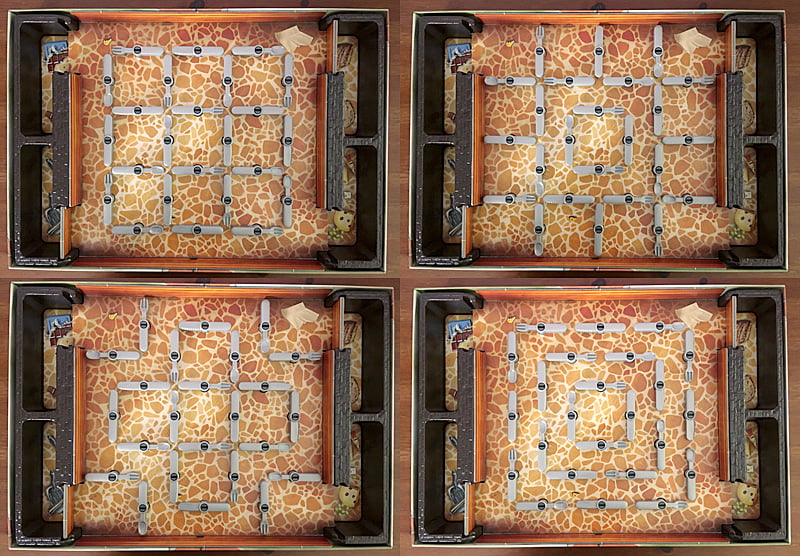
How to Play Bugs in the Kitchen
Setup
Place the Bug Tokens into a pile near the board. Each player chooses a corner of the board with a trap. Any unused traps are closed off using the trap door pieces. The players decide which of the four starting positions to use for the Utensils and turn them to form this design.
The youngest player then switches on the Hexbug nano and places it into the center of the board. Bugs in the Kitchen is now ready to play.
Gameplay
Playing Bugs in the Kitchen is very simple indeed. Each player takes it, in turn, to roll the die and then turn a Utensil that corresponds to the symbol shown.
- Knife: Turn a Knife 90 degrees
- Fork: Turn a Fork 90 degrees
- Spoon: Turn a Spoon 90 degrees.
- Question Mark: Turn any Utensil 90 degrees
The utensils should always be tuned 90 degrees until they lock into place. Diagonal positions are not allowed.
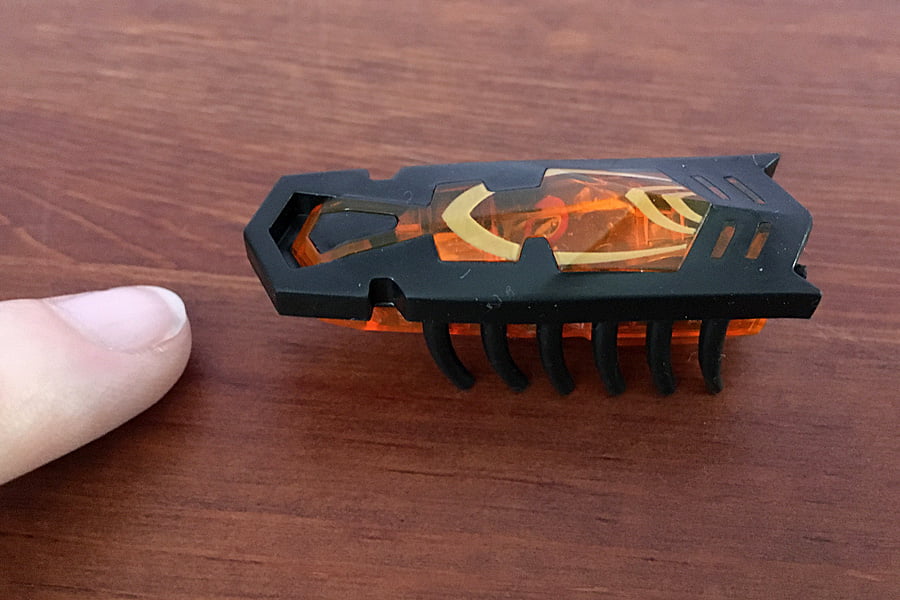
Players continue taking turns until the Hexbug crawls its way into one of the open traps. The Hexbug is then switched off, the Utensils are reset to any of the four starting positions, and the Hexbug is returned to the center of the board. The player whose trap the Hexbug crawled into received one bug token and begins the next round by rolling the die after the Hexbug has been switched back on.
Winning the Game
Gameplay continues with players taking it in turns to roll the die until one player has collected five Bug Tokens and wins the game.
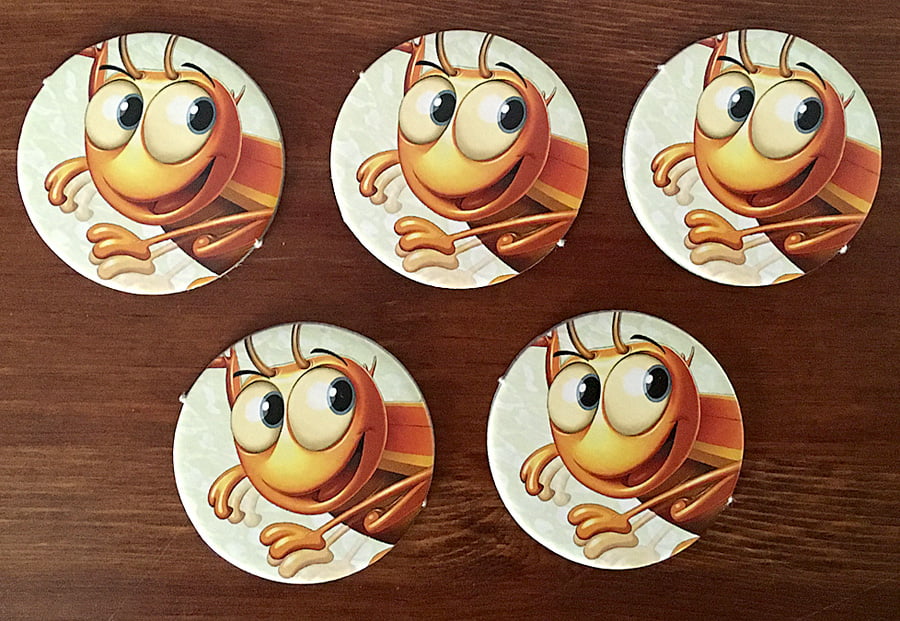
Bugs in the Kitchen Verdict
Bugs in the Kitchen is a great family game that everyone will be able to play. It balances elements of chance (rolling the die), strategy (choosing which Utensil to turn), and entirely random factors (where the Hexbug will go) to create a game that will change constantly as you play.
My ten-year-old son really enjoyed the random factor introduced by the Hexbug. With no players controlling where the Hexbug goes, even the best-laid strategies can be swiftly scuppered. Players can move any Utensil and can work to block their opponent’s traps, but the Hexbug may still never go near their own trap, thus preventing them from scoring any Bug Tokens.
One issue with the game is that the Hexbug keeps getting trapped in the corners where the Utensils meet. Curved pieces might help to solve this problem but for now, players may need to occasionally give the Hexbug an occasional, gentle nudge to help free it. When and how to do this fairly is something that will need to be agreed upon by all the players. The box also needs to be laid on an entirely flat surface or the Hexbug will constantly migrate to one end which makes it unfair to the players with traps on the opposite side.
Bugs in the Kitchen will really appeal to kids (and also to cats, make sure you keep any curious kitties away during games unless you watch to find yourself chasing after a stolen Hexbug instead of playing). It is fast-paced without being stressful because so few decisions are required, and it is easy enough for everyone to understand and play. This is a game that grandparents and young children will be able to enjoy playing together and I would suspect that children even younger than the recommended six-years will be able to play, although watch those small pieces around little fingers.
Look out for our review of Bugacular – another Hexbug game from Ravensburger – later this year.
GeekMom received a copy of this game for review purposes.



